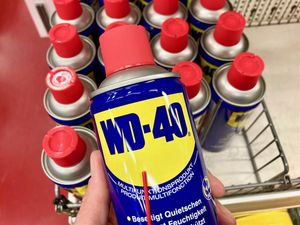
Packaged food company Campbell's (NASDAQ: CPB) met Wall Street’s revenue expectations in Q2 CY2025, with sales up 1.2% year on year to $2.32 billion. Its non-GAAP profit of $0.62 per share was 8.8% above analysts’ consensus estimates.
Is now the time to buy CPB? Find out in our full research report (it’s free).
Campbell's (CPB) Q2 CY2025 Highlights:
- Revenue: $2.32 billion vs analyst estimates of $2.33 billion (1.2% year-on-year growth, in line)
- Adjusted EPS: $0.62 vs analyst estimates of $0.57 (8.8% beat)
- Adjusted EBITDA: $427 million vs analyst estimates of $414.9 million (18.4% margin, 2.9% beat)
- Adjusted EPS guidance for the upcoming financial year 2026 is $2.47 at the midpoint, missing analyst estimates by 6.5%
- Operating Margin: 11.6%, up from 3.4% in the same quarter last year
- Organic Revenue fell 3% year on year vs analyst estimates of 2.7% declines (34.4 basis point miss)
- Sales Volumes fell 4% year on year (1% in the same quarter last year)
- Market Capitalization: $10.06 billion
StockStory’s Take
Campbell’s second quarter saw a positive market reaction, as management pointed to resilience in its meals and beverages business and sequential improvement in snacks. CEO Mick Beekhuizen highlighted that at-home cooking trends continued to support core categories such as condensed soups and broths, while recent product innovations, like Kettle Brand Avocado Oil chips and Milano White Chocolate cookies, drove consumer engagement. The company also cited ongoing cost savings and productivity efforts as key to navigating a challenging operating environment.
Looking ahead, Campbell’s guidance reflects both higher anticipated tariff costs and a commitment to increased marketing and innovation. Management expects ongoing headwinds from input cost inflation, particularly tariffs on imported tin plate for soup cans and Italian-made Rao’s sauces, but plans to mitigate these through productivity gains and targeted pricing. CFO Carrie Anderson cautioned that while tariff mitigation strategies such as supplier collaboration and inventory management will help, earnings will face pressure, stating, “Two-thirds of the decline is really because of the net tariff impact that we talked about.”
Key Insights from Management’s Remarks
Management emphasized that consumer demand for value, premium experiences, and wellness continues to shape portfolio strategy and innovation across both the meals and beverages and snacks segments.
- At-home cooking drives meals: Continued consumer interest in cooking at home provided a tailwind for Campbell’s condensed soups and broths, with leadership brands gaining share and maintaining relevance among millennial and boomer households.
- Snacks segment sequential improvement: While snacking categories remain pressured, management reported improved consumption and share performance for brands like Pepperidge Farm and Snack Factory, with innovations such as Milano White Chocolate contributing to category outperformance.
- Innovation pipeline focus: Recent launches, including Swanson’s first ramen broth and expanded Pacific bone broth flavors, are intended to meet consumer preferences for health, flavor, and premiumization. CEO Beekhuizen noted that innovation contributed approximately 3% to net sales, with expectations for this to rise.
- Tariff mitigation and cost savings: The company is intensifying its PEEK cost savings program, targeting $375 million by 2028, and expects to offset about 60% of tariff impacts in the coming year through productivity, supplier collaboration, and selective pricing.
- Portfolio optimization and divestitures: The exit of brands like Pop Secret and Noosa reflects a focus on core leadership brands, while the integration of Sovos Brands continues to generate cost synergies and support growth in Italian sauces.
Drivers of Future Performance
Campbell’s outlook is shaped by higher tariff costs, a stepped-up focus on brand investment, and a gradual recovery in snacks, with stabilization expected later in the year.
- Tariff and cost pressure: Management expects tariffs—particularly on imported tin plate for soup cans and Italian-sourced Rao’s sauces—to be the main earnings headwind, accounting for roughly two-thirds of the projected decline in non-GAAP earnings per share. Mitigation will rely on productivity, supplier collaboration, and limited pricing actions.
- Innovation and marketing investment: Increased spending on marketing and new product development is intended to support brand awareness and consumer engagement, especially for brands like Rao’s and Goldfish. Management believes these investments are critical for driving buy rate and household penetration.
- Snacks business stabilization: Sequential progress in snacks is expected to continue, with a return to stable performance in the second half of the year. Management attributes this to new product launches, improved price-pack architecture (such as Goldfish multi-packs), and expanded distribution and in-store execution.
Catalysts in Upcoming Quarters
In the coming quarters, the StockStory team will monitor (1) the effectiveness of Campbell’s tariff mitigation and productivity initiatives, (2) the stabilization and potential recovery of the snacks segment, and (3) the impact of innovation and increased marketing on household penetration and buy rate—particularly for Rao’s, Goldfish, and other leadership brands. Execution on these priorities will be central to assessing progress against management’s strategic goals.
Campbell's currently trades at $33.37, up from $31.44 just before the earnings. At this price, is it a buy or sell? Find out in our full research report (it’s free).
Our Favorite Stocks Right Now
Donald Trump’s April 2025 "Liberation Day" tariffs sent markets into a tailspin, but stocks have since rebounded strongly, proving that knee-jerk reactions often create the best buying opportunities.
The smart money is already positioning for the next leg up. Don’t miss out on the recovery - check out our Top 9 Market-Beating Stocks. This is a curated list of our High Quality stocks that have generated a market-beating return of 183% over the last five years (as of March 31st 2025).
Stocks that made our list in 2020 include now familiar names such as Nvidia (+1,545% between March 2020 and March 2025) as well as under-the-radar businesses like the once-small-cap company Comfort Systems (+782% five-year return). Find your next big winner with StockStory today.
StockStory is growing and hiring equity analyst and marketing roles. Are you a 0 to 1 builder passionate about the markets and AI? See the open roles here.






